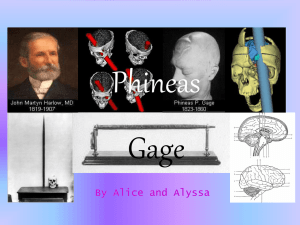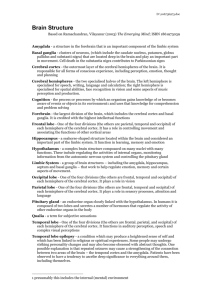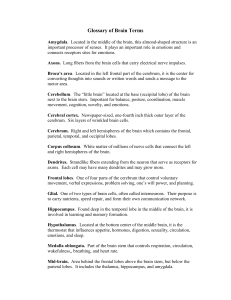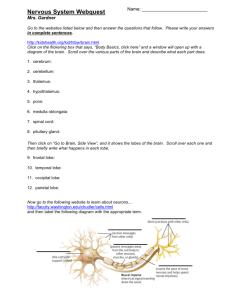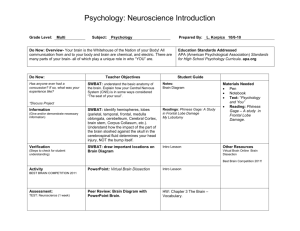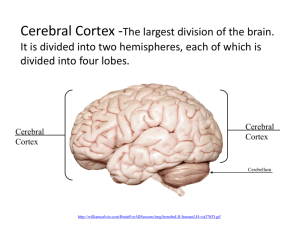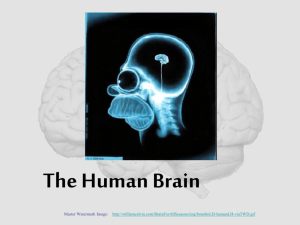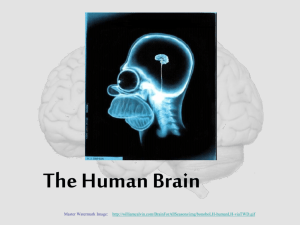Brain: Cerebrum, Lobes, and the Cerebral Cortex
advertisement
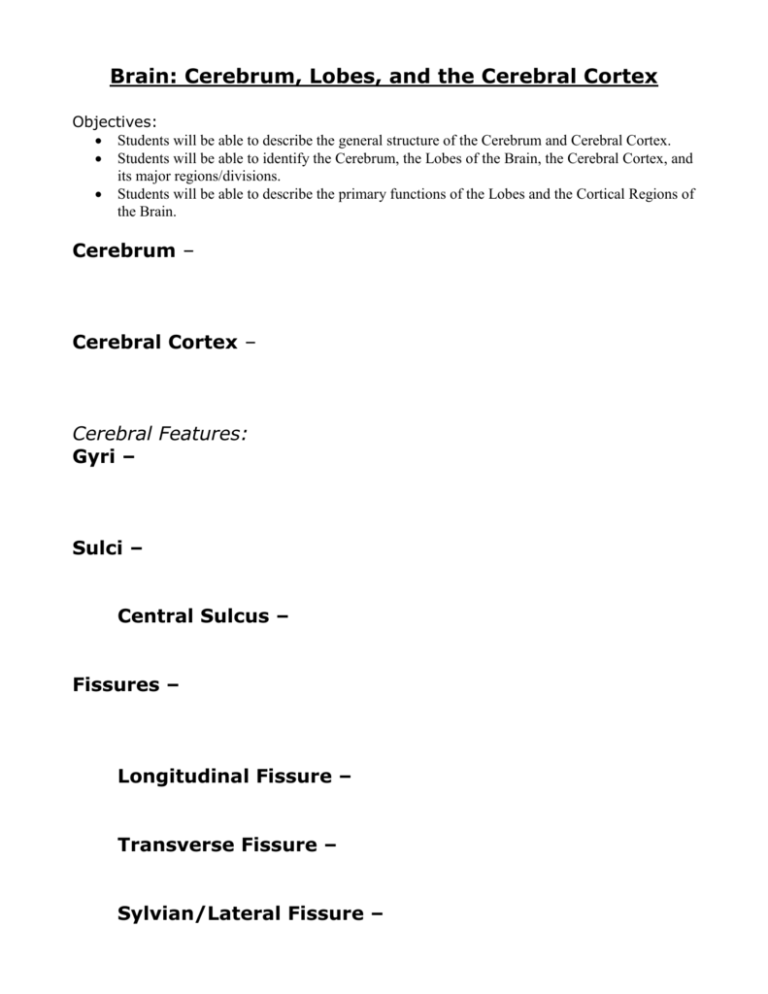
Brain: Cerebrum, Lobes, and the Cerebral Cortex Objectives: Students will be able to describe the general structure of the Cerebrum and Cerebral Cortex. Students will be able to identify the Cerebrum, the Lobes of the Brain, the Cerebral Cortex, and its major regions/divisions. Students will be able to describe the primary functions of the Lobes and the Cortical Regions of the Brain. Cerebrum – Cerebral Cortex – Cerebral Features: Gyri – Sulci – Central Sulcus – Fissures – Longitudinal Fissure – Transverse Fissure – Sylvian/Lateral Fissure – Lobes of the Brain (4): - Frontal - Parietal - Occipital - Temporal * Note: Occasionally, the Insula is considered the fifth lobe. It is located deep to the Temporal Lobe. _____ * Frontal Lobe: * It plays an integral role in the following functions/actions: Cortical Regions of the Frontal Lobe: Primary Motor Cortex (Precentral Gyrus) – Broca’s Area – * Broca’s Aphasia – Orbitofrontal Cortex – Desired Effects: Diminished Side Effects: Epilepsy Decreased Poor Perseveration - Olfactory Bulb – _____ * Parietal Lobe: It plays a major role in the following functions/actions: Cortical Regions of the Parietal Lobe: Primary Sensory Cortex (Postcentral Gyrus) – Primary Gustatory Cortex – _____ * Occipital Lobe: Its primary function is the processing, integration, and interpretation of: Cortical Regions of the Occipital Lobe: Primary Visual Cortex – Visual Association Area– _____ * Temporal Lobe: The temporal lobe plays an integral role in the following functions: Cortical Regions of the Temporal Lobe: Primary Auditory Cortex – Primary Olfactory Cortex – Wernicke’s Area – * Wernicke’s Aphasia – ___ Arcuate Fasciculus – Further Investigation: Phineas Gage Phineas Gage: Phineas Gage was a railroad worker in the 19th century living in Cavendish, Vermont. One of his jobs was to set off explosive charges in large rock in order to break them into smaller pieces. On one of these instances, the detonation occurred prior to his expectations, resulting in a 42 inch long, 1.2 inch wide, metal rod to be blown right up through his skull and out the top. The rod entered his skull below his left cheek bone and exited after passing through the anterior frontal lobe of his brain. Remarkably, Gage never lost consciousness, or quickly regained it (there is still some debate), suffered little to no pain, and was awake and alert when he reached a doctor approximately 45 minutes later. He had a normal pulse and normal vision, and following a short period of rest, returned to work several days later. However, he was not unaffected by this accident. Q: Recalling what you have just learned regarding the frontal lobe, what possible problems or abnormalities may Gage have presented with subsequent to this type of injury (remember the precise location of the rod through his brain)? Q: It is suggested that Gage’s injury inspired the development of what at one time was a widely used medical procedure. What might this procedure be, and how does it relate to Gage’s injury?

